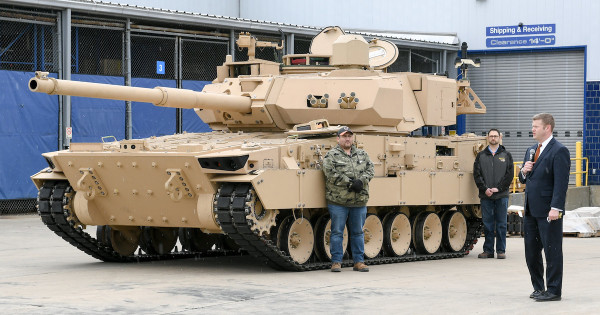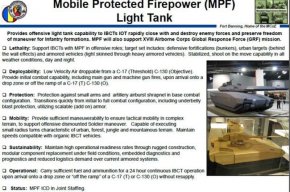Hi, new here.
I'm an Israeli, former serviceman in the IDF. I served in the redacted corps, specializing in RF, so my background in combat vehicles and aviation is only on the level of an enthusiast. However, I do have some knowledge in system design, as I designed numerous RF systems.
The methodology of designing systems is very similar in at least most fields, so my background in RF specifically should not be a problem.
Many years ago I've read Rolf Hilmes' definition of tank generations, 1 through 3.
The 3rd and last generation was characterized by advanced composite armor, a further leap in raw firepower (120mm), computerized firing solutions for fire on the move, and of course a steady progress in these specific avenues.
Of course as a system designer I'd say the inclusion of 120mm in the 3rd gen, or 105mm in the 2nd gen, are irrelevant, but tank design was very much one dimensional at the time, and it's again relevant when countries are far more reluctant to switch ammo now that the cold war fears have faded.
I think that there is no 4th gen tank yet, and for that I will define what I believe is a 4th gen tank, and I will use many examples.
The 4th generation of tanks is one that incorporates a vast array of new emerging or maturing (in the civilian sector) technologies, into a platform that was purpose built to accommodate these technologies now, and a growth path of at least several decades with these technologies as the baseline.
Some technologies already come to mind:
*APS
*Manned-Unmanned teaming.
*360° view in 0 latency.
*NLOS surveillance.
*NLOS strike.
*Target sharing and tender.
*AI-assisted sensors.
*Intuitive cockpit design.
*Armored capsule.
Some of them can be implemented on existing platforms, but not nearly with the same efficiency as a clean sheet design. Let alone all of them.
For example, the Abrams' Trophy installation is bulky and awkward, requiring ballasts even, even though the Trophy advanced a lot during those years.
The Merkava's Trophy implementation is almost seamless due to modular armor, but it's struggling with the new IronVision system, which despite the relative spaciousness of the Merkava, is still very cumbersome.
A cockpit design in a capsule is basically out of the question for all current in-service tanks.
So we can conclude at least that the next generation of tanks, the 4th if you will, will be one populated by clean sheet designs emerging in the late 20's to early 40's.
Next we can talk not about the tech, but the general architecture.
Since, well, a long time, the Israeli MoD demanded a 2-man crew. We can see the US going in the same direction as well, and so does Germany, and all of them want it by late 20's to mid 30's.
But when you look at France, you can see they're a bit of an odd case. They want a 3 man crew and operational by early to mid 40's. Why the big difference, especially when they were the only geographically (not only culturally) western country to build 3-man tanks, i.e always 1 man shorter than the rest of the western world. Now it wants 1 man more?
Well, it's not as different from the rest as you may think.
All want a baseline 2-man crew to operate the tank alone. But all also want an optional 3rd man to operate systems around the tank. What this means is handling the manned-unmanned teaming process.
So the TC is the gunner of the tank's systems, and the 3rd man is sort of the gunner and commander of the drones. It's just that France, perhaps, sees the 3rd crewman as more integral than in other countries, and it may have a lot to do with acquisition policy.
I mean, to create proper MUM-T on all tanks, every tank must have multiple UGVs and UAVs operational at all times, otherwise he's just sitting there. I don't think most armies will be ready to field so many drones when the new tanks are only emerging, just to employ the new operators. That's a lot of resources.
Instead, I can see how certain countries create armories where for maybe 10 brigades they store about 2 brigades worth of drones and distribute them according to the mission needs. Transporting hundreds of drones per brigade when they're not particularly useful, and can be done with 10% of them, is a too complex task.
A basic crew of 2, TC and driver, without MUM-T seems to be a layout on which the entire industrial base of the west has a consensus, so there's nothing for us, side viewers to argue about.
Now to speculate on what the future tech may be:
1)Anti-KE APS - This actually existed for a long time, but not in a form factor that can satisfy customers.
The Iron Fist IF-LK provides the same KE bias but in a smaller form factor, similar to the IF-LC that was at the center of IMI/Elbit's rebranding campaign as the smallest APS on the market.
Other APS may provide a similar performance but in a static launcher layout or tiled layout. All of them, including the current Iron Fist, suffer from one major flaw and that is an inability to reload from within the vehicle, automatically. Basically, the only 2 market-ready anti-KE APS have between 2 to 4 interceptors available for anti-KE in total or per large defended area.
The best concept is the Quick Kill, utilizing a VLS with a potentially large store of munitions, but its viability against KE was not proven yet.
2)Glass cockpit - Remember all these stories of tank crews leaving their tanks after a patrol for a quick checkup and seeing lots of bullet marks? Well imagine if that was an RPG.
Crewmen today aren't truly immersed in the battlefield and have a false understanding of it. A glass cockpit can fix that, especially when coupled with a 360° vision system, and you can use the opportunity to have it encased in armor to provide unprecedented protectuon.
3)MUM-T - With the help of a deployable light drone, or a mast, a single vehicle can scout a vast area, and quickly even, when coupled with AI aided target recognition, and overlayed blueforce tracking.
Alternatively, it could control unmanned logistical vehicles to spare humans in dangerous routes, send drones to minefields if breaching vehicles aren't readily available, or pop up and fire in direct fire mode when doing it yourself would be too dangerous.
It gives an entire layer of tactical flexibility.
4)NLOS strike - a tank, being a small mothership and the first source of overwhelming firepower, can and should maintain short range, over the hill firepower to deal with enemies too close or too urgent to call artillery.
5)Target sharing and tender - A tank may not always be the best option for an attack, for many reasons like ammo conservation, cost of munitions, and concealment. It's important to have a sort of bidding option where an officer with relevant knowledge can decide which asset is best to utilize for a specific target. You don't want to waste a super expensive Javelin on a single combatant.
Some may skip one or two, but these are the guiding principles of the next gen platform.
One more thing to add, some may think the American and Israeli programs are conducted in reverse when one's viewed from the perspective of the other. That is not really true. The digital architecture part is the longer, trickier one. Both are doing it, and Israel has only done a feasibility test. The US is doing that part as well, and even demonstrated some tech on Bradleys and M113 (MET-D).
The big difference is the US is already running a competition for platforms for the OMFV, while Israel is likely pursuing the traditional path of developing a platform at home, behind a veil. Usually such vehicles are shown 3 years before entering limited production and 5 years before IOC.




